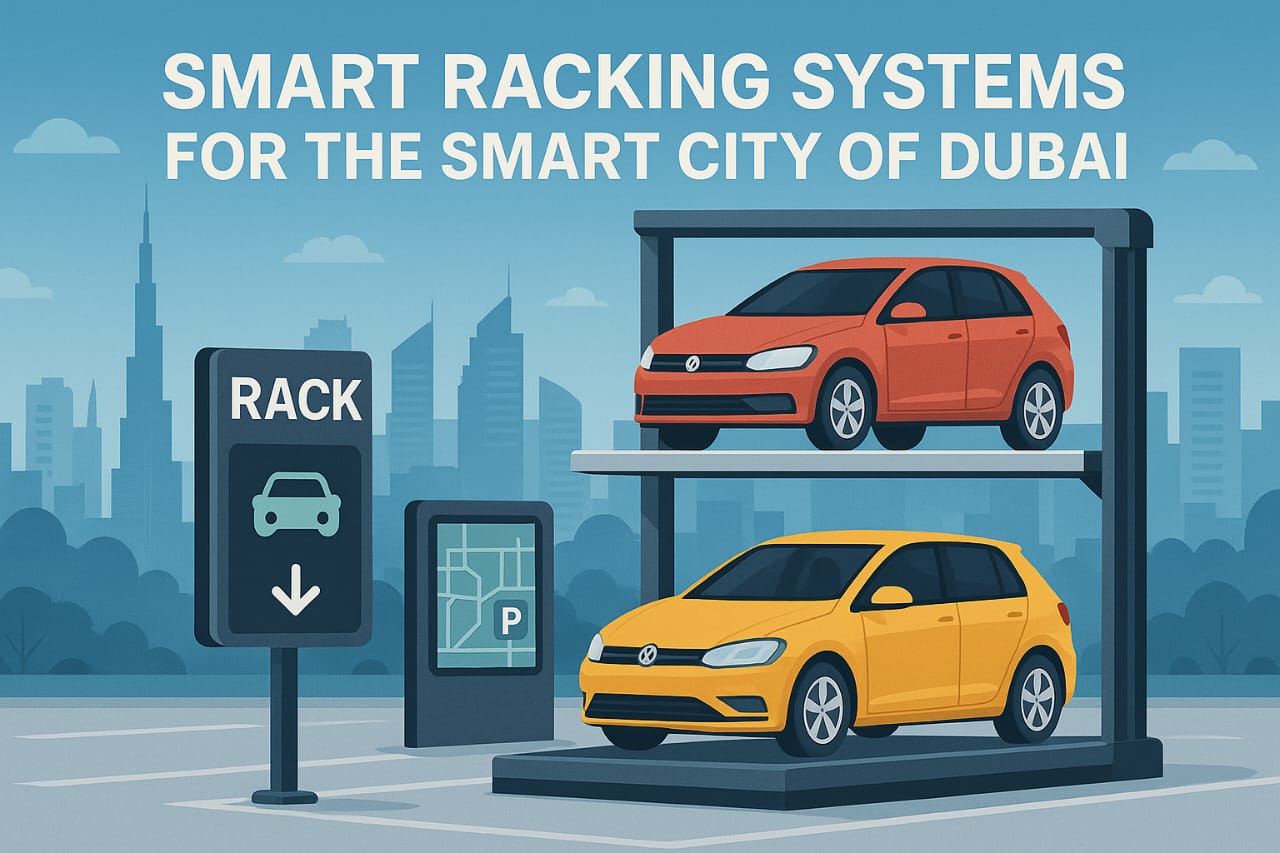
Dubai isn’t just a city of skyscrapers and innovation—it’s a smart city in every sense, including how it moves, stores, and delivers goods. As the emirate accelerates its Dubai 2030 Smart Logistics Vision, traditional warehouses are transforming into tech-driven fulfillment hubs powered by Smart Racking Systems.
In this article, we explore how smart racking systems in Dubai are redefining logistics, increasing efficiency, and supporting the region’s rapid shift toward automated, data-centric operations.
🤖 What Are Smart Racking Systems?
Smart racking systems go beyond static storage—they integrate with:
- Automated Storage and Retrieval Systems (AS/RS)
- IoT (Internet of Things) sensors
- AI-powered Warehouse Management Systems (WMS)
- Real-time analytics dashboards
- Cloud-connected load monitoring and inventory tracking
These systems not only store inventory—they talk, learn, and adapt in real time.
🚀 Why Dubai Is Leading the Smart Racking Revolution
Dubai’s push toward smart city infrastructure includes:
- Automated ports and customs (DP World, Jebel Ali)
- Autonomous delivery drones and robots
- Blockchain-based logistics networks
- AI-driven smart warehousing in freezones (JAFZA, DAFZA, Dubai South)
📈 By 2026, over 70% of warehouses in Dubai are expected to adopt some form of warehouse automation.
Smart racking is at the core of this transformation.
💡 Benefits of Smart Racking Systems in Dubai Logistics
1. Automated Inventory Movement
Smart racks use shuttles, cranes, or vertical lifts to move pallets without manual input—ideal for high-density zones like Dubai Industrial City.
2. Real-Time Load Monitoring
Sensors detect weight, location, and expiration status of each pallet—preventing overloads, theft, or expired inventory.
3. Integration with WMS and ERP
Smart racks are synced with backend systems like SAP or Oracle, allowing real-time stock updates, reordering triggers, and performance metrics.
4. AI-Powered Slotting Optimization
Using machine learning, systems rearrange inventory locations based on picking frequency, seasonality, and order patterns—reducing travel time and labor.
🔍 Example: A Dubai FMCG brand reduced order processing time by 48% using AI-driven racking optimization.
🏗️ Components of a Smart Racking System
| Component | Function |
|---|---|
| AS/RS Shuttles | Automated pallet movement |
| Load Sensors | Real-time weight, temperature, tilt detection |
| Barcode/RFID Scanners | Track SKU location and movement |
| AI Slotting Engine | Optimize storage positions over time |
| Cloud Dashboards | Inventory and performance visibility |
| Smart Safety Barriers | Prevent collisions with humans/forklifts |
🏢 Where Smart Racking Systems Are Used in Dubai
- Jebel Ali Free Zone (JAFZA): Tech-powered 3PL warehouses
- Dubai South Logistics District: Fulfillment centers for eCommerce
- DAFZA: Cold chain pharma warehouses using IoT-enabled racks
- Dubai CommerCity: Fashion and lifestyle brand storage
📊 Smart Racking vs Traditional Racking
| Feature | Traditional Racking | Smart Racking |
|---|---|---|
| Manual Handling Required | Yes | No or minimal |
| Real-Time Visibility | Limited or none | Fully integrated dashboards |
| Load Monitoring | Manual checks | Automated sensors |
| Inventory Updates | Periodic (manual) | Real-time sync with WMS |
| Picking Optimization | None | AI-based slotting |
| Space Utilization | ~65% | Up to 90% |
💼 Business Advantages in the UAE Market
- Faster Turnaround Time – Essential for B2C deliveries and last-mile fulfillment.
- Lower Labor Dependency – Crucial in regions facing skilled labor shortages.
- Better Forecasting – Smart data means smarter procurement and less dead stock.
- Regulatory Compliance – Track-and-trace functionality for pharmaceuticals and perishables.
- Sustainability – Optimized energy use and reduced wastage align with Dubai’s ESG goals.
🔍 Best Use Cases
- Cold Storage (food & pharma): Load/temp monitoring ensures compliance.
- eCommerce Fulfillment: Automated order picking at scale.
- High-Value Goods: Security and trackability for electronics and luxury items.
- Hazardous Materials: Minimize human interaction and automate handling.
🧠 Implementation Strategy
Step 1: Conduct a Warehouse Technology Audit
Understand current storage inefficiencies and readiness for automation.
Step 2: Partner with a Racking Technology Expert
Choose a vendor experienced in Dubai market regulations, IoT, and WMS integrations.
Step 3: Define ROI Goals
Set measurable KPIs: storage density, pick speed, inventory accuracy, energy savings.
Step 4: Begin with a Pilot Project
Start with a zone or SKU range and scale upon proven results.
Step 5: Train Your Workforce
Upskill your staff to manage and maintain the system—human + machine synergy is key.
🧭 Choosing the Right Smart Racking Partner
✅ Experience with Dubai freezone regulations
✅ In-house design + WMS integration team
✅ Strong after-sales support & training
✅ Certified load & safety compliance
✅ References from UAE or GCC-based projects
🧩 Final Thoughts
Dubai is not just embracing the future—it’s engineering it. Smart racking systems are no longer a luxury—they’re a logistical necessity for businesses competing in the fast-paced, tech-savvy UAE market.
By investing in these systems today, you prepare your supply chain for:
- Speed
- Scale
- Sustainability
- Smart analytics
📦 In the Smart City of Dubai, even your racks should be smart.